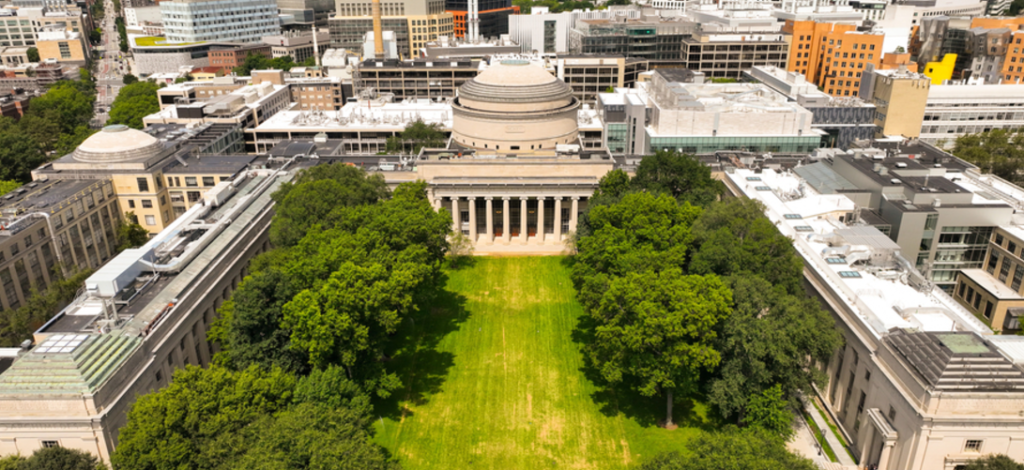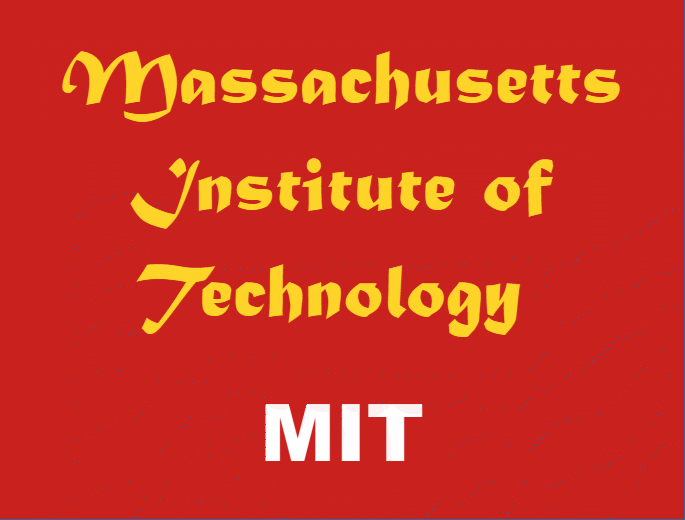The Massachusetts Institute of Technology (MIT) stands as a beacon of innovation, excellence, and academic rigor. Located in Cambridge, Massachusetts, MIT has earned global recognition as one of the most prestigious institutions in the realms of science, technology, and engineering. Founded in 1861, MIT has consistently pushed the boundaries of human knowledge, producing groundbreaking research and nurturing the brightest minds to tackle the world’s most pressing challenges. With a mission to advance knowledge and educate students in science, technology, and other areas of scholarship, MIT remains a hub for intellectual creativity and discovery.
MIT’s campus, situated along the Charles River, fosters a dynamic environment where interdisciplinary collaboration thrives. The institution is home to over 11,000 students, who come from diverse backgrounds, representing over 90 countries. Its faculty includes Nobel laureates, MacArthur fellows, and National Medal of Science recipients, embodying a rich tradition of academic achievement and groundbreaking research.
The university’s cutting-edge research laboratories, world-class faculty, and robust entrepreneurial ecosystem are central to its global reputation. MIT alumni have gone on to found thousands of companies, many of which have reshaped industries and created millions of jobs worldwide. The culture of innovation at MIT is exemplified by its unique combination of theoretical excellence and practical application, enabling transformative contributions to fields such as artificial intelligence, biotechnology, renewable energy, and aerospace engineering.
In this article, we delve deep into MIT’s history, academic programs, contributions to innovation, and its unique culture. We also explore common FAQs about the institution and share exclusive facts that underline its significance in shaping the future.
Article Contents
Academic Programs and Schools at MIT.
Culture and Student Life at MIT.
The Entrepreneurial Spirit of MIT.
Top 10 Exclusive Facts About MIT.
Conclusion: The Legacy and Future of MIT.

PULOKA – 2 in 1 Flip Cover for iPhone 15
Limited Time Deal: -54% ₹919
A Brief History of MIT
MIT was founded in 1861 in response to the increasing industrialization of the United States. Its founder, William Barton Rogers, envisioned an institution that combined rigorous academic instruction with practical application. From its inception, MIT was unique in emphasizing scientific and technological education rather than a classical liberal arts curriculum.
The institute officially opened its doors in 1865, following delays caused by the Civil War. Its early years saw a strong emphasis on laboratory instruction, which became a model for technical education worldwide. Over the decades, MIT expanded its scope, integrating disciplines such as architecture, economics, and political science into its curriculum.
During World War II, MIT played a pivotal role in national defense research, particularly in radar development. This legacy of innovation continued in the post-war era, with MIT researchers contributing to the development of the first computers, space exploration, and the internet. Today, MIT continues to lead in addressing global challenges, from climate change to AI ethics.
Why People Prefer MIT
The Massachusetts Institute of Technology (MIT) is one of the most prestigious institutions in the world. It is renowned for its cutting-edge research, innovative teaching methods, and its ability to produce leaders in various fields. Here are some reasons why people prefer MIT:
1. World-Class Education
MIT offers an unparalleled educational experience. The institution is known for its rigorous academic programs and emphasis on hands-on learning. Students have the opportunity to work on real-world problems and engage in research projects from the start of their academic journey. The faculty at MIT includes some of the brightest minds in the world, who are dedicated to pushing the boundaries of knowledge and innovation.
2. Research Opportunities
MIT is a hub for groundbreaking research. It is home to numerous research labs and centers, providing students with the resources and support needed to pursue their interests. The institute’s commitment to research excellence is evident in its significant contributions to fields such as artificial intelligence, biotechnology, and renewable energy.
3. Innovation and Entrepreneurship
MIT fosters a culture of innovation and entrepreneurship. The institute encourages students to think creatively and develop solutions to pressing global challenges. Many successful startups and companies have been founded by MIT alumni, benefiting from the institute’s extensive network and support systems.
4. Global Reputation
MIT’s reputation extends far beyond its Cambridge, Massachusetts campus. The institute is consistently ranked among the top universities globally. Its degrees are recognized and respected worldwide, opening doors for graduates in academia, industry, and public service.
5. Diverse Community
MIT prides itself on its diverse and inclusive community. Students from all over the world come to MIT, bringing a wide range of perspectives and experiences. This diversity enriches the learning environment and prepares students for global careers.
6. Cutting-Edge Facilities
MIT boasts state-of-the-art facilities that support its academic and research missions. From advanced laboratories to innovative classrooms, the infrastructure at MIT is designed to enhance learning and discovery.
7. Strong Alumni Network
The MIT alumni network is one of the most influential and supportive in the world. Alumni are actively involved in mentoring current students, providing career advice, and supporting each other in their professional endeavors. This network is a valuable resource for students and graduates alike.
8. Interdisciplinary Approach
MIT promotes an interdisciplinary approach to education and research. The institute encourages collaboration across different fields, fostering a holistic understanding of complex issues. This approach helps students develop critical thinking and problem-solving skills that are essential in today’s interconnected world.
9. Focus on Real-World Impact
At MIT, the focus is not just on academic excellence but also on making a real-world impact. The institute emphasizes the application of knowledge to solve societal problems and improve the human condition. This mission-driven approach attracts students who are passionate about making a difference.
10. Extracurricular Opportunities
MIT offers a wide range of extracurricular activities, from sports and arts to student organizations and community service. These opportunities allow students to explore their interests, develop leadership skills, and build a well-rounded profile.
In short, MIT’s blend of academic rigor, research excellence, innovation culture, and global reputation makes it a preferred choice for many students. The institute provides a supportive and dynamic environment where students can thrive and achieve their full potential. Whether it’s through cutting-edge research, entrepreneurial ventures, or impactful projects, MIT empowers its students to shape the future.
Academic Programs and Schools at MIT
MIT is organized into five schools, each encompassing a broad range of disciplines:
- School of Engineering: The largest school at MIT, it offers programs in aerospace, mechanical, chemical, electrical, and civil engineering, among others.
- School of Science: This school covers fundamental sciences such as biology, chemistry, physics, and mathematics, fostering groundbreaking research.
- School of Architecture and Planning: Known for its innovative approach to urban studies, architecture, and design.
- Sloan School of Management: Renowned for its MBA program and research in business and entrepreneurship.
- School of Humanities, Arts, and Social Sciences: Balances MIT’s technical focus with critical studies in philosophy, literature, and economics.
The institute also offers interdisciplinary programs that blend these disciplines, such as Computational Science and Engineering and the Media Lab, which explores intersections of technology, art, and design.
MIT’s Research Ecosystem
MIT’s research output is legendary, contributing significantly to scientific and technological advancements. The university spends over $1 billion annually on research, hosting numerous labs and centers dedicated to diverse fields. Some key research initiatives include:
- Artificial Intelligence and Robotics: The Computer Science and Artificial Intelligence Laboratory (CSAIL) is a world leader in AI research, focusing on machine learning, robotics, and ethical AI.
- Climate and Sustainability: The MIT Energy Initiative and Climate Action programs aim to develop sustainable technologies and policies.
- Space Exploration: The MIT Kavli Institute for Astrophysics and Space Research collaborates with NASA on missions such as the TESS exoplanet search.
- Biotechnology and Health: From CRISPR gene-editing research to developing mRNA vaccine technology, MIT plays a pivotal role in life sciences.
Culture and Student Life at MIT
Despite its rigorous academics, MIT fosters a vibrant student life. Students engage in over 500 student organizations, ranging from robotics clubs to theater groups. The campus is also known for its unique traditions, such as the annual “Hack Day,” where students showcase their creative problem-solving skills through elaborate pranks.
MIT promotes a collaborative environment, reflected in its non-competitive grading policies for freshmen. Students are encouraged to work together, creating a sense of community and shared purpose.
Diversity and inclusion are core values at MIT, with dedicated programs to support underrepresented groups in STEM fields. The institution’s global outlook is evident in its study-abroad opportunities and partnerships with universities worldwide.
The Entrepreneurial Spirit of MIT
MIT’s influence extends beyond academia into the entrepreneurial world. Its alumni have founded over 30,000 active companies, including industry giants like Intel, Dropbox, and Bose. The institute’s Martin Trust Center for MIT Entrepreneurship provides resources, mentorship, and funding for aspiring entrepreneurs.

MIT’s close ties with venture capital and its location in the Boston-Cambridge innovation hub contribute to a thriving startup ecosystem. Events like the MIT $100K Entrepreneurship Competition further inspire students to turn their ideas into impactful ventures.
Getting admission in MIT
Getting admission to MIT (Massachusetts Institute of Technology) is a competitive process that requires careful preparation and attention to detail. Here are the key steps to follow:
1. Understand the Requirements
MIT requires applicants to submit several components as part of their application:
- Biographical Information: Basic details about yourself.
- Essays: Personal and supplemental essays.
- Activities: Information about extracurricular activities and achievements.
- Academics: High school transcript and standardized test scores (SAT or ACT).
- Recommendations: Two letters of recommendation (one from a math or science teacher and one from a humanities, social science, or language teacher).
- Secondary School Report (SSR): Including your high school transcript.
2. Prepare Your Application
- Standardized Tests: Take the SAT or ACT and submit your scores. MIT also recommends English proficiency exams for non-native English speakers1.
- Essays: Write thoughtful and reflective essays that showcase your personality, interests, and goals.
- Recommendations: Request letters from teachers who know you well and can speak to your strengths and potential.
- Transcripts: Ensure your high school transcript is complete and accurately reflects your academic performance.
3. Submit Your Application
- Early Action (EA): Deadline is November 1. You’ll receive an admissions decision in mid-December1.
- Regular Action (RA): Deadline is January 6. You’ll receive an admissions decision in mid-March1.
4. Financial Aid
If you’re applying for financial aid, submit the necessary materials by February 15. MIT offers need-based financial aid to eligible students.
5. Supplemental Materials
For certain applicants, such as researchers, performing artists, visual artists, and makers, MIT allows the submission of creative portfolios through SlideRoom.
6. Stay Informed
Keep track of important dates and deadlines, and ensure you submit all required materials on time. MIT’s admissions website provides detailed information and updates.
7. Decision and Enrollment
If admitted, you’ll need to inform MIT of your enrollment decision by May 1.
Additional Tips
- Start Early: Begin preparing your application well in advance to ensure you have enough time to gather all necessary materials.
- Be Authentic: Be yourself in your essays and interviews. MIT values genuine and passionate students.
- Seek Guidance: Consider seeking advice from school counselors, teachers, or mentors who can help you navigate the application process.
Top 10 Exclusive Facts About MIT
- MIT invented the first computer capable of real-time computing in the 1950s.
- The first-ever email was sent from an MIT computer in 1971.
- MIT’s dome has been “hacked” with a full-sized police car placed on its roof as a prank.
- The university’s faculty and alumni have won over 100 Nobel Prizes.
- MIT researchers helped develop the first artificial heart.
- The campus features a nuclear reactor used for educational and research purposes.
- MIT alumni-founded companies generate revenues equivalent to the 11th largest economy in the world.
- The Media Lab’s work inspired many modern technologies, including e-ink used in Kindle.
- MIT’s library system includes over 3 million printed volumes and extensive digital archives.
- The school colors, cardinal red and silver gray, symbolize the balance of practicality and creativity.
Top 30 FAQs About MIT
- What is MIT best known for?
MIT is renowned for its programs in science, engineering, and technology, as well as its groundbreaking research and entrepreneurial culture. - Where is MIT located?
MIT is located in Cambridge, Massachusetts, along the Charles River. - What is MIT’s acceptance rate?
MIT’s acceptance rate is highly competitive, typically around 4-7%. - Does MIT offer online courses?
Yes, through platforms like edX and MIT OpenCourseWare. - What majors are offered at MIT?
MIT offers over 50 undergraduate majors across five schools, including engineering, science, and humanities. - How much does it cost to attend MIT?
Tuition for undergraduates is approximately $60,000 per year, but financial aid significantly offsets costs for eligible students. - Is financial aid available at MIT?
Yes, MIT offers need-based financial aid and meets 100% of demonstrated financial need. - What is MIT OpenCourseWare?
MIT OpenCourseWare is a free online platform offering lecture notes, exams, and videos from MIT courses. - What is CSAIL?
CSAIL (Computer Science and Artificial Intelligence Laboratory) is MIT’s leading lab for AI and robotics research. - How diverse is MIT?
MIT’s student body is highly diverse, with students from over 90 countries and strong support for underrepresented groups. - Does MIT have a campus?
Yes, MIT’s campus spans 168 acres in Cambridge, Massachusetts. - What is the average SAT score for MIT?
The average SAT score for admitted students is between 1510-1570. - Can you study humanities at MIT?
Yes, MIT has a strong School of Humanities, Arts, and Social Sciences. - What is the MIT Media Lab?
The MIT Media Lab focuses on interdisciplinary research at the intersection of technology, media, and design. - Does MIT have sports teams?
Yes, MIT’s athletic teams, called the Engineers, compete in NCAA Division III. - What is the student-to-faculty ratio at MIT?
The ratio is approximately 3:1, ensuring personalized attention. - What is the motto of MIT?
MIT’s motto is “Mens et Manus,” meaning “Mind and Hand.” - What is the mascot of MIT?
The mascot is the beaver, symbolizing engineering and industriousness. - Does MIT have dormitories?
Yes, MIT offers a variety of on-campus housing options for students. - What is the average class size at MIT?
Most classes have fewer than 20 students. - What makes MIT unique?
Its blend of rigorous academics, cutting-edge research, and entrepreneurial focus. - How do I apply to MIT?
Applications are submitted through the MIT Admissions website, requiring essays, recommendations, and standardized test scores. - Does MIT have a study-abroad program?
Yes, MIT offers study-abroad opportunities through programs like MISTI. - What is the graduation rate at MIT?
MIT boasts a high graduation rate of around 93%. - Are there famous alumni from MIT?
Yes, alumni include Buzz Aldrin, Kofi Annan, and Richard Feynman. - What is the MIT Sloan School of Management?
Sloan is MIT’s business school, known for its MBA program and leadership training. - Does MIT have partnerships with other institutions?
Yes, MIT collaborates with global universities and organizations on research and education. - What are MIT hacks?
MIT hacks are clever, large-scale pranks showcasing student ingenuity. - Does MIT offer Ph.D. programs?
Yes, MIT offers doctoral programs in numerous disciplines. - Is MIT affiliated with Harvard?
While independent, MIT and Harvard collaborate on joint research and share cross-registration opportunities.
Conclusion: The Legacy and Future of MIT
The Massachusetts Institute of Technology (MIT) is more than just a world-class educational institution; it is a transformative force that has shaped industries, advanced technology, and influenced global progress. From its humble beginnings in 1861 to its present status as a global leader in innovation, MIT has consistently fulfilled its mission of blending “mind and hand” to solve humanity’s most complex challenges.

The institute’s contributions span a wide spectrum of fields, including artificial intelligence, climate science, biotechnology, and space exploration. MIT’s unparalleled focus on interdisciplinary collaboration and practical application ensures that knowledge is not just theoretical but also actionable and impactful. Its commitment to fostering an entrepreneurial spirit has resulted in the creation of thousands of startups and innovations that have redefined industries and improved lives around the world.
Beyond academics and research, MIT’s culture fosters creativity, collaboration, and inclusivity. It attracts a diverse community of scholars, innovators, and leaders united by a shared passion for discovery and problem-solving. Traditions like student “hacks” and the unique freshman grading policy highlight a balance between rigor and community, making the MIT experience both challenging and enriching.
As the world faces evolving challenges such as climate change, data privacy, and global health crises, MIT remains at the forefront, leveraging its expertise and resources to drive progress. The institution’s legacy is not only in its past achievements but in its enduring capacity to inspire and equip future generations to push the boundaries of what is possible.
In essence, MIT is not just an institution—it is a symbol of human ingenuity and aspiration, a place where ideas take shape and where the future is constantly being reimagined. Its impact, both historical and ongoing, cements its position as a beacon of hope and innovation for the world.
Curated for you





BWER empowers businesses in Iraq with cutting-edge weighbridge systems, ensuring accurate load management, enhanced safety, and compliance with industry standards.